At first I was… and then I wasn’t… and then I was… and then I wasn’t going to add a touch of silver to the outlines of the letters on this embroidery project.
For those just joining in, I’m embroidering some text on a strip of linen called a “maniturgium,” which I explain in this article.
When we last looked at the project, I was testing out a different affect on the lettering, and I think that worked out ok. I’m going to keep that approach.
From the beginning, I have toyed with the idea of adding a touch of silver around the lettering, just as a tiny (tiny-tiny) outline. Just a hint, you know! But again, I was plagued with indecision. Should I? Shouldn’t I? The only way to know for sure was to try it out!
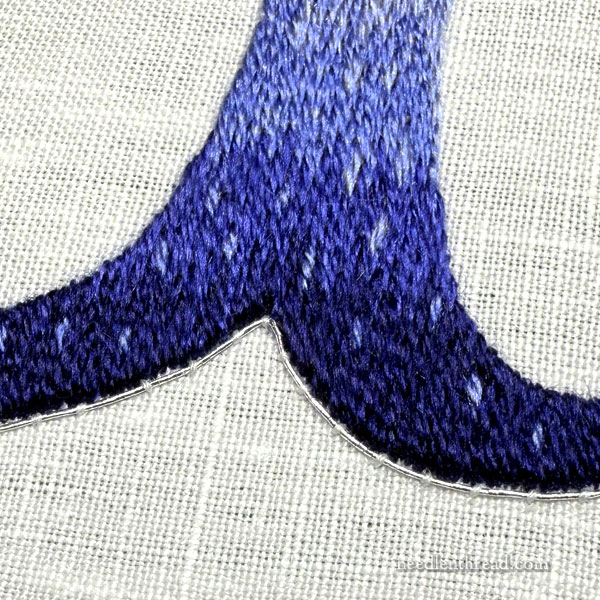
And so I did.
I’m using what is called tambour thread. This is a thread that sort of falls in the metal thread category, that you’d use for goldwork. But I’m not sure it’s technically a real metal thread.
I’ve used gold tambour thread for various projects, probably the most commonly featured one here on the website being this little stylized bird in tambour embroidery. The gold accents on the tail and the gold swirls on it are worked in gold tambour thread #7, using a tambour hook.
Now, you can imagine that working a chain stitch with a tambour hook requires that the thread be rather flexible – and it is! It’s a synthetic metal thread, with the silver or gold wrapped around a very fine inner core, and the whole thing is synthetic.
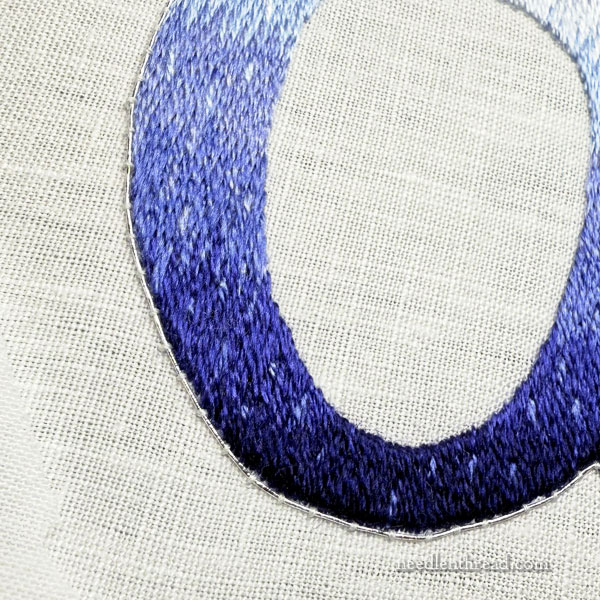
It doesn’t look synthetic, but it behaves like a synthetic thread (which is a good thing, in this case). It can be laundered (within reason) and it does not tarnish. In other words, it won’t oxidize or darken over time, like a real metal thread with a quantity of silver in it would.
Tambour thread is very, very fine. This point lends a little to my hesitation. I want a fine outline, but do I want it this fine?
As I mentioned, it’s also flexible. I definitely want a thread that is flexible. A very stiff wiry thread would not work well in this context.
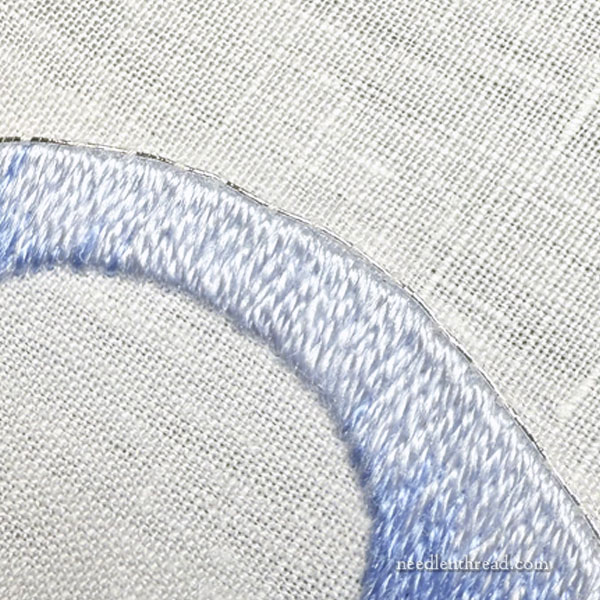
The flexibility, though, can be a wee bit problematic if you’re using it for a couched outline, because stitch tension on the couching stitches will affect the way the tambour thread lies on the fabric.
Whenever I start a thread like this – whether it’s a real metal thread or not – really, any stitch – it takes me a few stitches to get into the groove of stitch spacing and stitch tension.
You can see that, as the silver outline on the “A” begins, it’s a bit wobbly.
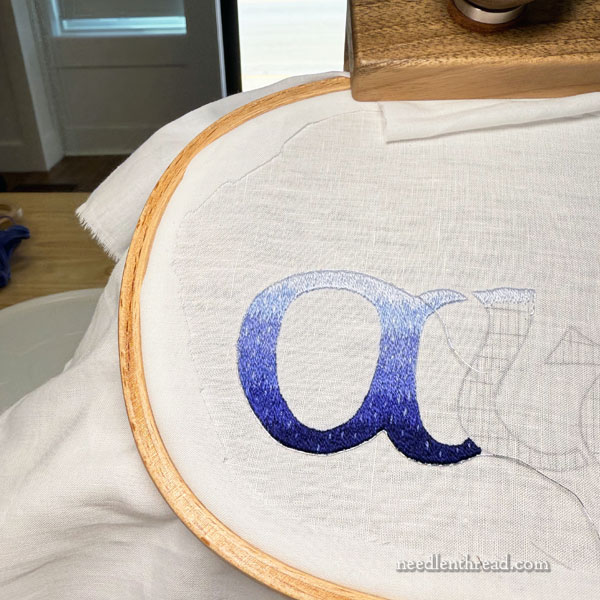
When couching a silver thread like this, the preferred color of the couching thread is normally white, so I’m using a white silk thread (a #50 Silk Tire thread) to couch the tambour thread.
I always coat my couching thread with 100% beeswax, to strengthen the thread against the metal thread.
When working with white as the couching thread, it’s helpful to have white beeswax. But 100% white beeswax isn’t so easy to find in small cakes. I have a few pieces leftover from small white beeswax candles that I use for this job.
The question is: will I keep the silver outline, or not?
And I’m going to leave you hanging on that question – primarily because I am also hanging on that question.
We can hang together!
As my mom would say, “It’s a wait-and-see game.”


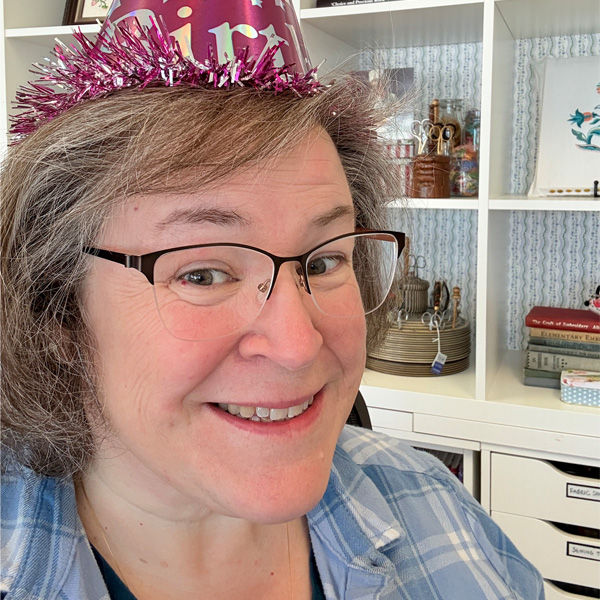

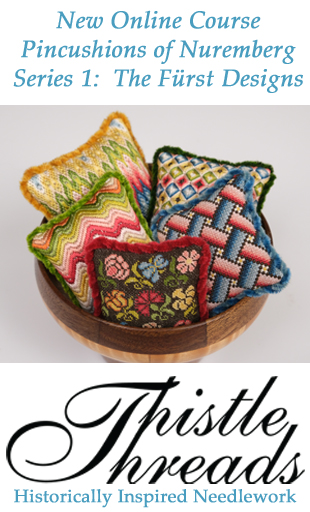
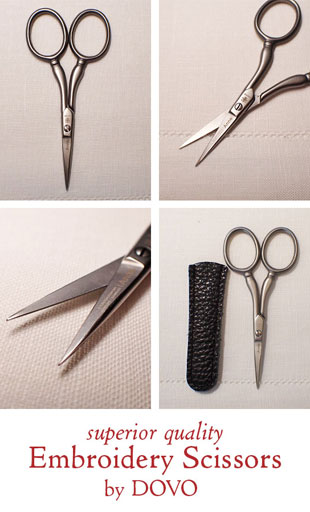
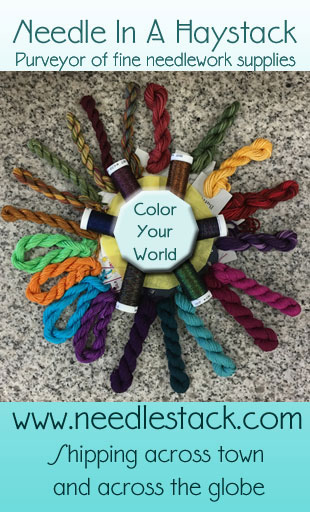
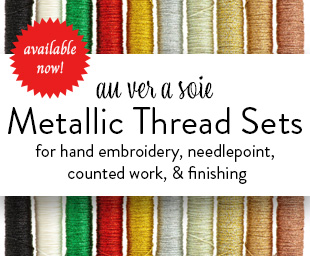
Leave A Comment